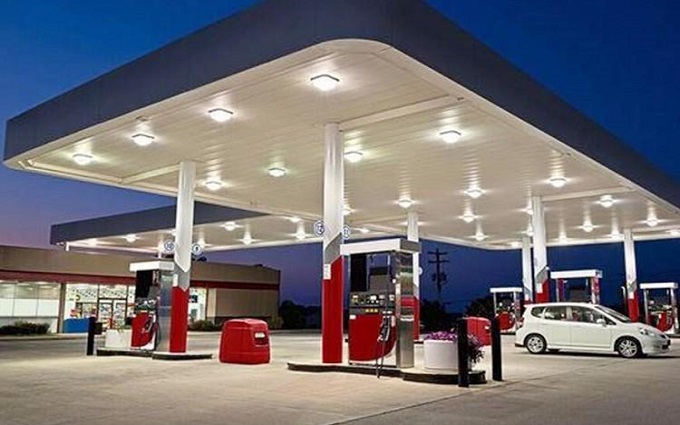Analysis of Issues in the Design, Construction, and Use of Gas Station Canopies
Types of Canopies
Currently, gas station canopies are mainly of two types: space frame structure canopies and light Steel structure canopies, with the latter being more widely used due to their advantages such as light weight, large span, fast construction, aesthetic design, and good earthquake resistance. Compared to traditional concrete structures, they offer greater economic benefits. However, certain issues still exist in the design, construction, and usage of these canopies. Therefore, it is necessary to investigate the considerations in design, construction, and usage to improve the safety of gas station canopy facilities.

I. Importance of Strengthening the Design and Construction of Gas Station Facilities
With the increasing number of automobiles in China, the rapid development of gas station construction highlights the importance of enhancing their design and construction. However, potential risks during actual construction can threaten the safety of gas stations and even cause casualties. Therefore, gas station construction units and local government departments must increase their attention to potential issues, analyze effective solutions, and minimize risks during gas station operations to ensure safe travel for people.
II. Analysis of Problems in the Design, Construction, and Use of Canopies
(1) Issues in the Design of Gas Station Canopies
Selection of Rod Specifications: During design, incorrect specifications such as overstressed rods or rods with excessive slenderness ratios might be chosen, which do not match the actual grid dimensions. The bearing capacity of the canopy supports, which directly affects the overall loadbearing capacity, might not be adequately planned, posing safety hazards.
Arrangement of Canopy Components: Misalignment with geometric stability standards can lead to instability in the rod system during actual construction. Overemphasis on aesthetics without proper lightning protection planning can leave the station vulnerable to lightning damage.
Incorrect Coating Thickness Design: Roof components often involve bending elements like purlins, which if undersized, cannot meet loadbearing requirements. Additionally, improper design of the top materials and purlin spacing can lead to deformation, failing to meet rigidity and strength standards.
(2) Issues in the Construction of Gas Station Canopies
Material Compliance: Using construction materials that do not meet standards can compromise welding performance and canopy loadbearing capacity, introducing potential safety risks.
Installation of Supporting Structures: Installing supports incorrectly, such as placing them on rods instead of ball joints, can lead to improper force distribution.
Deflection in Construction: Excessive deflection during construction can affect the actual force distribution in rods, necessitating the exploration of reasonable adjustment plans to ensure structural integrity.
Rod Bending: Any bending in rods during construction reduces their loadbearing capacity and must be closely monitored to prevent such issues.
(3) Issues in the Use of Gas Station Canopies
Corrosion of Components: Longterm use can lead to severe rusting, necessitating secondary anticorrosion treatment. Proper removal of rust before reapplication is essential to maintain the efficacy of anticorrosion measures.
Falling Hazards: Corrosion in roof panels and purlins can pose falling risks, which must be addressed to reduce potential losses.
III. Considerations in the Design, Construction, and Use of Gas Station Canopies
(1) Design Considerations
Planning Surrounding Structures: Ensuring the surrounding structure of the canopy, typically a grid structure, is closed or properly supported.
Design of Purlins: Using Cshaped purlins or coldformed rectangular tubes, planning spacing and specifications to ensure structural rigidity and strength.
Coating Thickness: Adequate coating thickness for steel structures, especially in humid areas, to prevent rust.
Grounding and Lightning Protection: Proper grounding methods and installation of lightning rods at canopy corners connected to the station's internal steel mesh.
(2) Construction Considerations
Emergency Plans: Develop and evaluate emergency plans based on actual construction conditions, considering risks and ensuring site safety.
Material Compliance: Ensure construction materials meet building needs and progress aligns with design expectations.
Orderly Construction: Select experienced contractors, control rod dimensions, avoid additional loads on truss positions, and adhere to anticorrosion requirements.
Site Management: Designate a project supervisor to oversee design and construction, ensuring issues are reported and discussed to improve efficiency.
(3) Usage Considerations
Employee Training: Train employees in safety knowledge, enabling them to detect and report issues like rust promptly.
Weather Response: Temporarily close the station during extreme weather, restricting access until conditions improve.
Safety Evaluations: For acquired stations or those lacking proper documentation, conduct safety evaluations before use.
Regular Inspections: Engage professional agencies for regular safety assessments and maintenance to address issues like corrosion and blockages.
PostCompletion Checks: Address any identified deficiencies postconstruction, ensure regular maintenance and preventive measures are in place.
Conclusion
Gas stations are crucial facilities with special functions, demanding high safety standards. With the increasing number of gas stations, ensuring their safety has become a key focus. This article analyzes the problems in the design, construction, and use of gas station canopies and provides relevant considerations to support the ongoing safe construction of gas stations.
RELATED NEWS
- Efficient Canopy Structures: Enhancing Gas Station Functionality and Aesthetics 2024-07-05
- Gas Station Construction Budget: How Much Does It Cost to Build a Gas Station? 2024-07-04
- Eight Key Factors in Aluminum-Magnesium-Manganese Roof Design 2024-07-04
- What Are Roof Purlins? What Are the Principles of Roof Purlin Layout? 2024-07-03
- Characteristics of Hangar Tents 2024-07-03
Categories
Latest News
Contact Us
Contact: Mr.Lu
Phone: +86-51668601029
E-mail: hbktech@163.com
Whatsapp:86+15152106218
Add: 1412, Building 2, Vanke Huaihai Xintiandi, Block 3, Quanshan District, Xuzhou City, Jiangsu Province